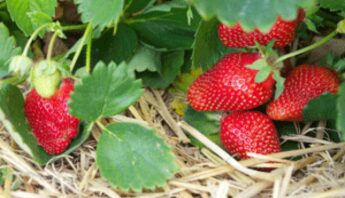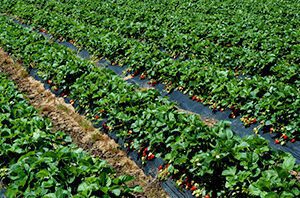For immediate release: August 28, 2013
Contact:
Paul Towers, PAN, 916-216-1082
Sarah Aird, CPR, 415-971-4401
Scientists Say Officials Ignored Science of Pesticide Linked to Cancer
Advocates deliver over 15,000 petitions urging officials to follow science, develop better health protections, and promote pesticide alternatives in California’s strawberry fields
Oakland & Sacramento, Calif – Just days before officials close off further public comment, a group of scientists and health professionals say senior California officials are downgrading threats from a pesticide that the state’s own scientists determined is linked to cancer. They are joined by advocates who agree that proposed measures don’t go far enough to protect the health and safety of farming communities.
"All of the scientists from the University of California and California Environmental Protection Agency who reviewed the studies on chloropicrin came to the conclusion that this fumigant is carcinogenic," said Susan Kegley, PhD, consulting scientist for Pesticide Action Network. "Yet the Department of Pesticide Regulation decision-makers altered that conclusion on the basis of a statistical argument to allow more exposure to the chemical. The fact remains that the studies show that chloropicrin is highly irritating and a potent carcinogen. DPR should be acting to prevent harm to California communities, not to allow more of it."
Dr. Kegley, along with half a dozen other scientists and health professionals, shared concerns in a detailed letter delivered earlier today pointing to clear evidence of carcinogenicity from a number of studies. They concur with the findings of toxicologists at two state agencies – the Department of Pesticide Regulation (DPR) and the Office of Environmental Health Hazard and Assessment – as well as the Scientific Review Panel, the body of independent scientists the state consults with, that say chloropicrin exposure levels should be set much lower. Scientists are urging officials to take a stronger approach to reduce exposure — a call echoed by advocates.
"Cancer-causing chloropicrin, like other hazardous fumigant pesticides, should be phased out by 2020," said Sarah Aird, co-director of the statewide coalition Californians for Pesticide Reform. "When the carcinogenic fumigant methyl iodide was pulled off the shelf, California officials made a commitment to invest in fumigant alternatives and support farmers to transition to safer methods. We have the money and the means to shift California’s agricultural economy off of fumigants, including chloropicrin. Until then, we need to the best protections in place for California communities."
In December 2010, senior DPR officials increased the proposed level of acceptable chloropicrin exposure through an opaque "risk mitigation" process. The current permit conditions proposal under review regulates to the same high levels of exposure – 25 times more than what the scientists say is safe. This is a significant increase in California, where high quantities of the pesticide are already in use. In 2011 alone, over 7.2 million pounds of chloropicrin were applied in California, largely on strawberry fields.
In a letter from over 100 organizations and delivered to officials earlier today, groups urged officials to take the following steps to reduce chloropicrin exposure until the chemical can be fully phased out:
- Create no-fumigation buffer zones that meet the scientific standard to protect vulnerable communities, especially children.
- Replace standard tarps with modern TIF tarps and prohibit all untarped applications involving chloropicrin.
- Require comprehensive neighbor notification and comprehensive real-time fumigation monitoring.
Groups voicing these concerns were joined by thousands of individuals across the state. Over 15,000 Californians submitted letters, petitions and postcards collected by the Center for Environmental Health, Environmental Working Group, Food & Water Watch, Monterey Safe Strawberries, Pesticide Action Network and the United Farm Workers.
Since 1999, more than 1,400 people — including farmworkers — have reported symptoms from chloropicrin as it drifts from neighboring fields, sometimes many days after an application. And many more poisonings likely go unreported for fear of retaliation. Exposure to this chemical can lead to eye irritation and severe respiratory damage, in addition to increased risk of cancer.
"Fumigant pesticides are difficult, if not impossible to control. As a result, ag-adjacent communities and farmworkers are regularly faced with the dangers of pesticide drift. California officials have a responsibility to protect agricultural communities and economies from the harms of pesticides like choloropicrin," said Erik Nicholson, National Vice President of the United Farm Workers.
Advocates point to safer and systemic solutions to fumigants, rather than replacing hazardous fumigants with other potentially health-harming pesticides. Sustainable and organic farmers in California and in Europe already use fumigant alternatives, including crop rotation, bio-fumigants like broccoli and mustard plants, steam sterilization, soil solarization and integrated pest management strategies.







